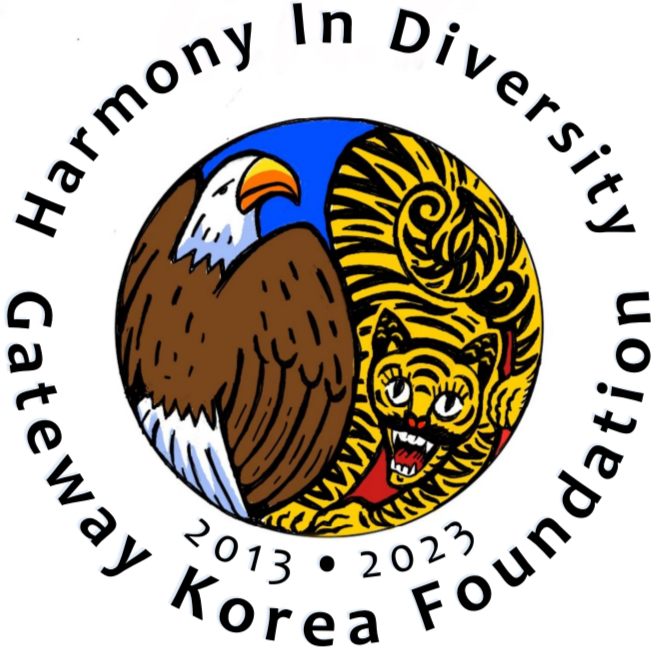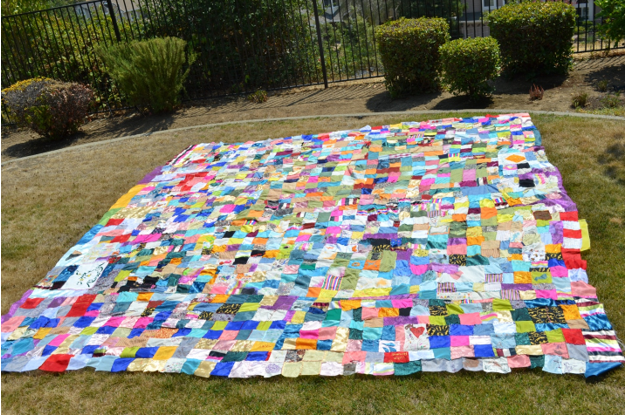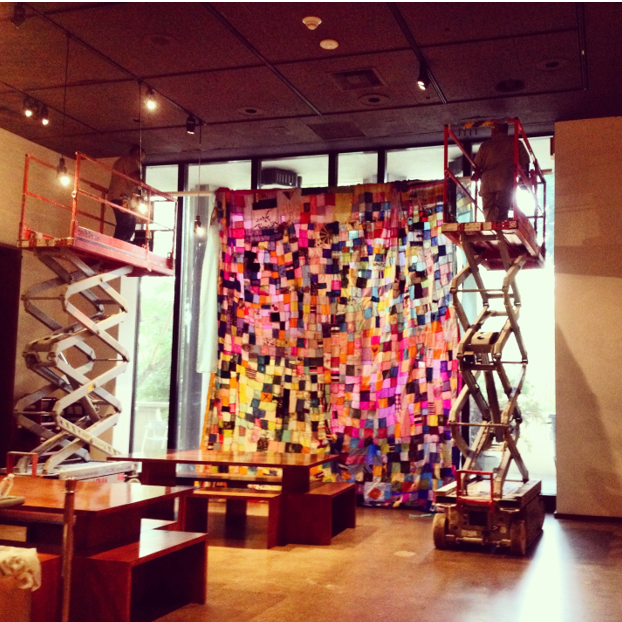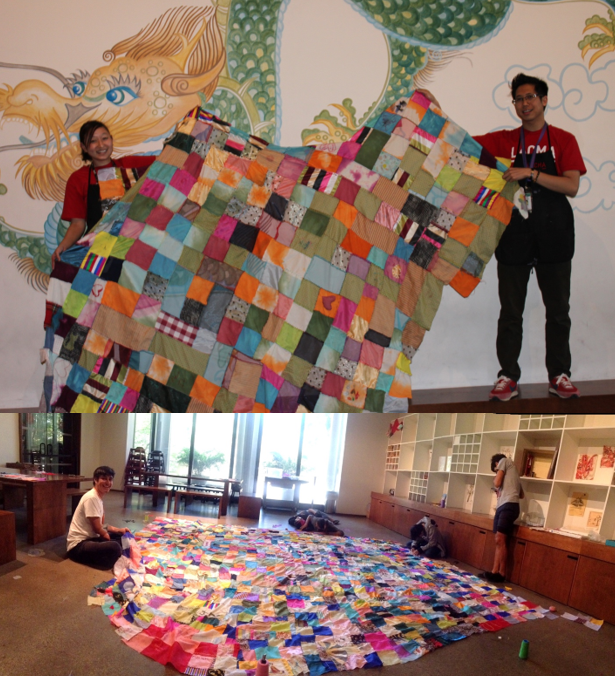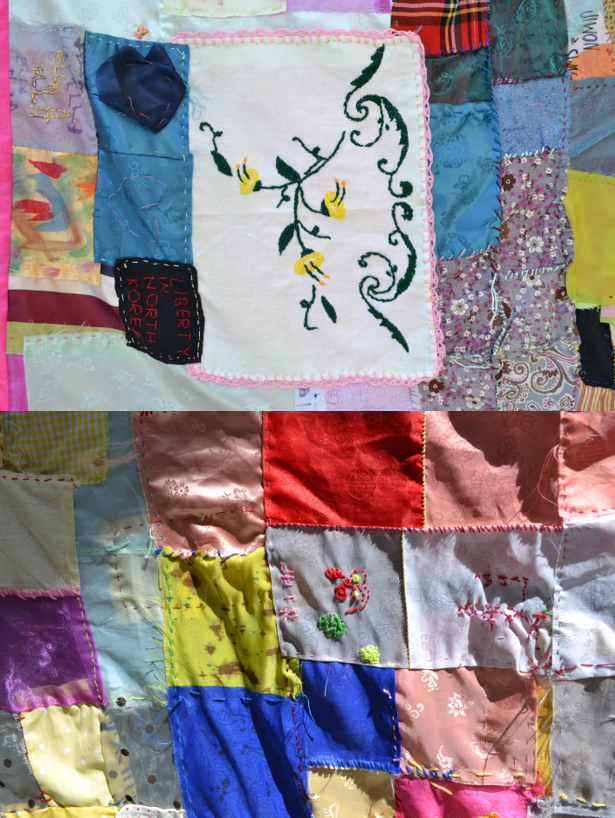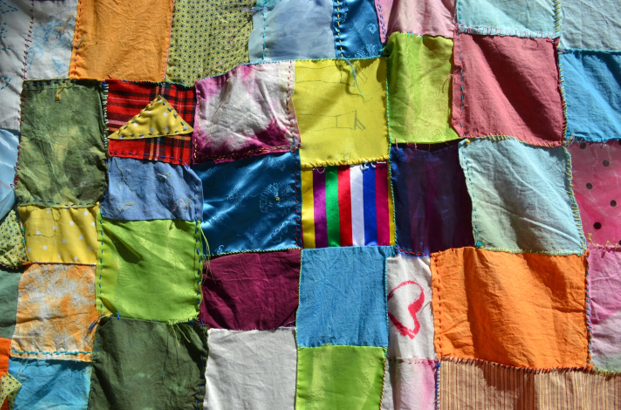Traveling Art Exhibit: Bojagi Art Exhibit
Save the date:
Location: Asian Affairs Center at MU
Date: Oct 1-15
Location: Harry S. Truman Library
Date: Oct. 20-Dec. 31st.
This artist-led project invites families to collaborate in the creation of a community tapestry inspired by a traditional Korean textile form called bojagi (wrapping or covering cloth commonly made from silk or ramie).
Bojagi are historically made within individual family units and are used to wrap, cover, decorate, or store objects. The term “community bojagi” was coined by artist Youngmin Lee to share this tradition with the broader community, expanding the definition of family and exploring ideas of cultural identity.
Youngmin says, “Koreans believe that bojagi can not only wrap an object but also enclose ‘bok’, good fortune or happiness. The act of making bojagi also carries wishes for the well-being and happiness of its recipients. I hope to extend affection and good wishes to all who participated in making the community bojagi.”
The Community Bojagi project is a partnership between the Saint Louis Art Museum and the Gateway Korea Foundation.
Photo by Melanie Zacek for Quiltfolk magazine
What is Bojagi
Bojagi are Korean traditional wrapping cloths. They were used to wrap, cover, carry, or store objects in daily life, special occasions, and religious rituals. Koreans believe that bojagi can not only wrap an object but also enclose bok (福, 복) good fortune or happiness.
The act of making bojagi also carries wishes for the well-being and happiness of its recipients. The labor of love and the good wishes felt while making the bojagi imbue the item with the affectionate energy of the maker. Historical records show that bojagi was used in the early days. One early example comes from the Samguk Yusa (Memorabilia of the Three Kingdoms of Korea), which contains legends, folktales, and historical accounts related to the Three Kingdoms of Korea (BC 57- AD 668). These were collected and written by the Buddhist monk Iryeon (1206–1289). The Legend of Garak mentions a golden box containing six golden eggs that came down from the heavens, wrapped in Hong pok (red bojagi). According to legend, the king Suro of Geumgwan Gaya was born from one of these golden eggs.
Fabrics deteriorate over time and with use. Therefore, most extant old bojagi are from the Joseon dynasty (1392-1910), but one exceptionally old extant bojagi was used to cover the ritual table of the Daegakguksa, Uicheon (1055–1101), a Buddhist priest. The earliest extant bojagi from the Joseon dynasty are the seven wrapping cloths made by Lady Yi in 1415 to wrap and cover Buddhist sutras in commemoration of her late husband, Yu Kun. These are embroidered wrapping cloths, decorated with Tang scrolls, grasses, trees, clouds, and cranes.
Bojagi held an important place in Koreans’ daily life during the Joseon dynasty, and this continues to modern times. Growing up in Korea, I hardly paid attention to bojagi because of its abundant presence in daily life. During the rigid and strict Confucius society of the Joseon dynasty (1392–1910), women were restricted to live in their house and its inner courtyard. When they did go outside of the family compound, they had to cover their faces and head so as to be invisible. They were not allowed to learn and write as men could. Along with sewing and embroidering, making bojagi must have been one of the few creative outlets they were permitted in the house. Korean women poured their creativity into stitching to make beautiful pieces they could use for many different purposes. Many bojagi were made for practical reasons with specific uses.
The anonymously created bojagi shows how women tried to make something useful and beautiful at the same time. As a textile artist who lives in the San Francisco Bay Area since 1990s, my creative process is focused in Bojagi and other Korean traditional textile tradition. This tradition influenced me greatly and I try to keep and pass down this tradition to next generation and to the creative community that I engage in. Bojagi has allowed me the opportunity to share my native culture and arts with not only the next generation of Korean Americans, but also people with many different cultural backgrounds. In 2004, I was invited to the San Francisco Asian Art Museum to participate in the ‘Asia Alive’ program. This was my first time meeting and engaging with the public about my work. I was at the museum four days a week, for four weeks, to share my bojagi, Korean textile tradition, and culture. The Asian Art Museum’s annual ‘Korea day’ celebration was another occasion where I was able to introduce bojagi to local museum visitors. In 2011, I was invited to a public school that has a Korean immersion program; the school asked me to come and teach bojagi classes to students from 3rd grade to 8th grade. I taught them every year until 2022.
As I participate in many cultural festivals and events, people express their interest and opinions about cultural diversity and similarity between cultures. Teaching bojagi and Korean culture to school children in local public schools and leading community bojagi projects at the Los Angeles County Museum and the Asian Art Museum in San Francisco were a few examples of how I’ve built a creative community through my cultural experience. I have been participating in the Oakland Museum’s Lunar New Year celebration for two decades, the Asian Art Museum’s Korea Day activities for seven years, and Irvine’s Korean Festival for four years. I believe that preserving artistic and cultural traditions is a great way to understand and connect communities, and I want to build bridges between cultures. In 2019 and 2022, I've been so fortunate to be a recipient of an apprenticeship supported by the Alliance for California Traditional Arts. I was honored to teach bojagi to my apprentices. By sharing traditional art and craft, I try to connect ancient tradition with contemporary audiences.
In 2023, the Gateway Korea Foundation, Saint Louis Art Museum, and I planned another community bojagi project to engage with museum visitors. I gathered donates materials and recycled fabrics from the previous projects. During 8/13-9/10, every Sunday afternoon at the museum, we encourage the museum visitors to participate in the project and the finished community bojagi will be unveiled on September 24, 2023. And I look forward to exhibiting this community bojagi at the Harry S. Truman Library Museum in October 2023.
